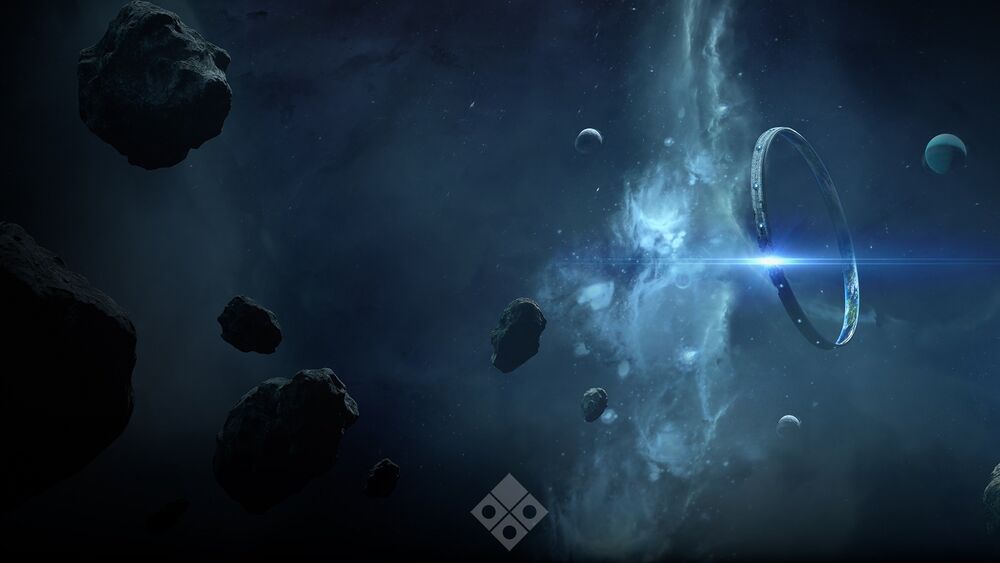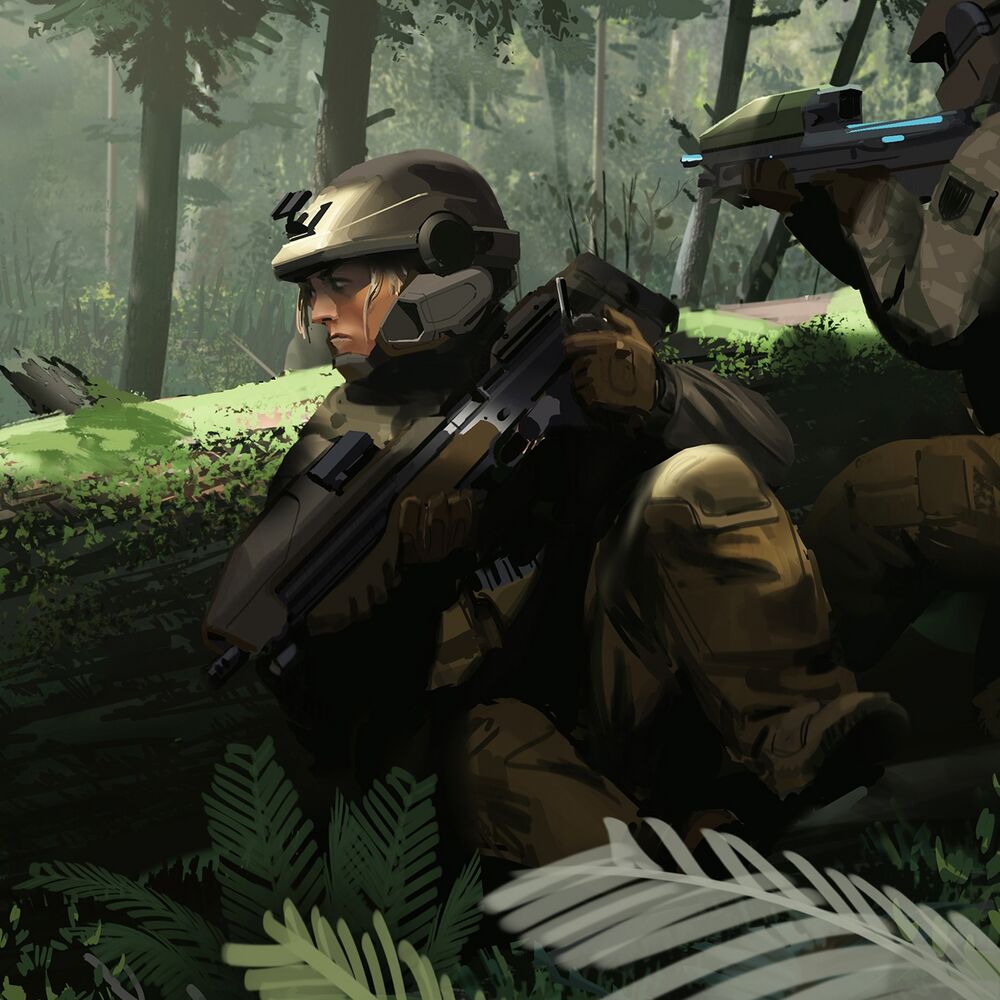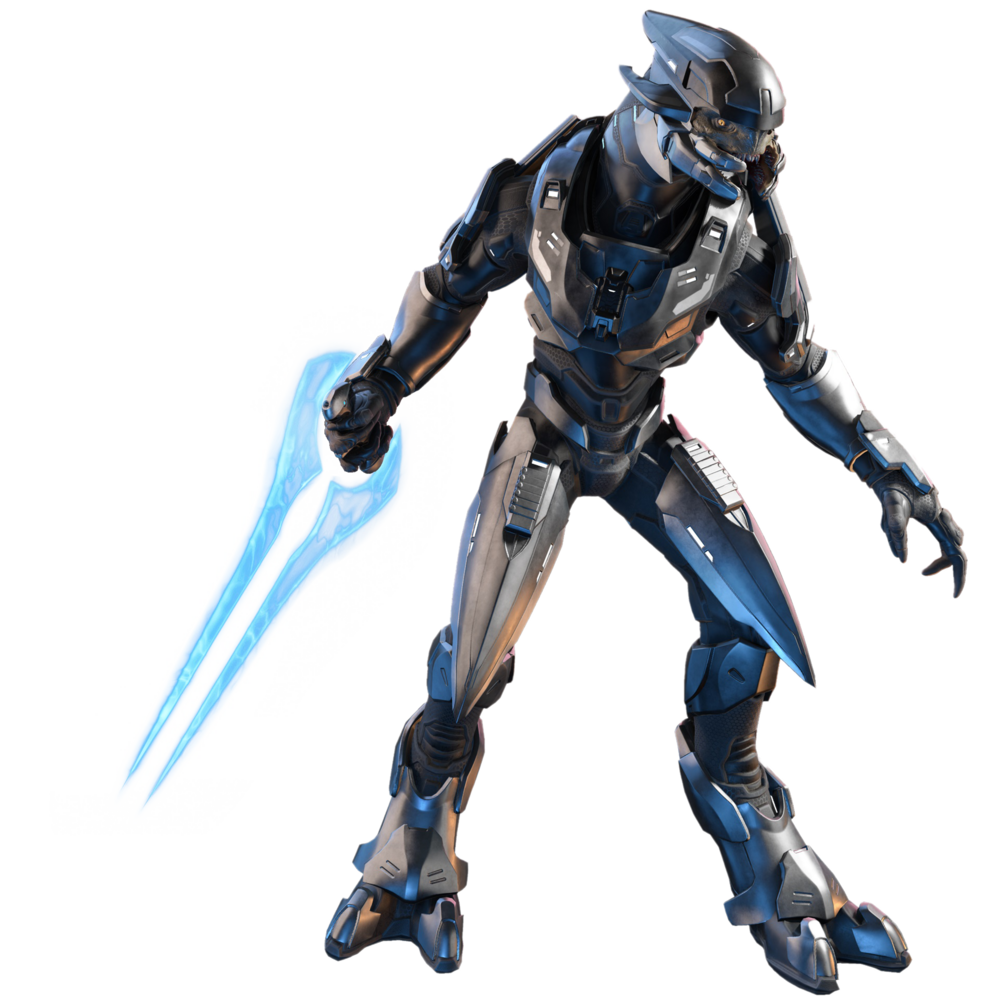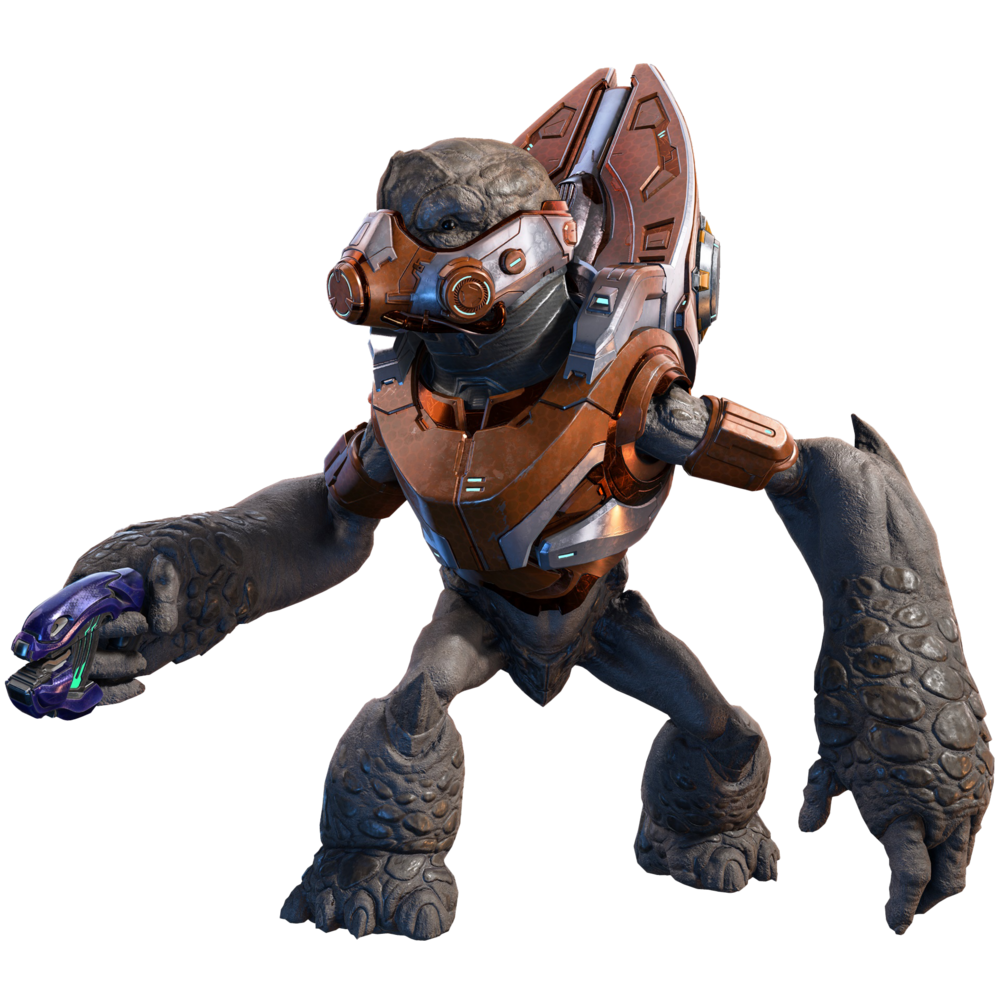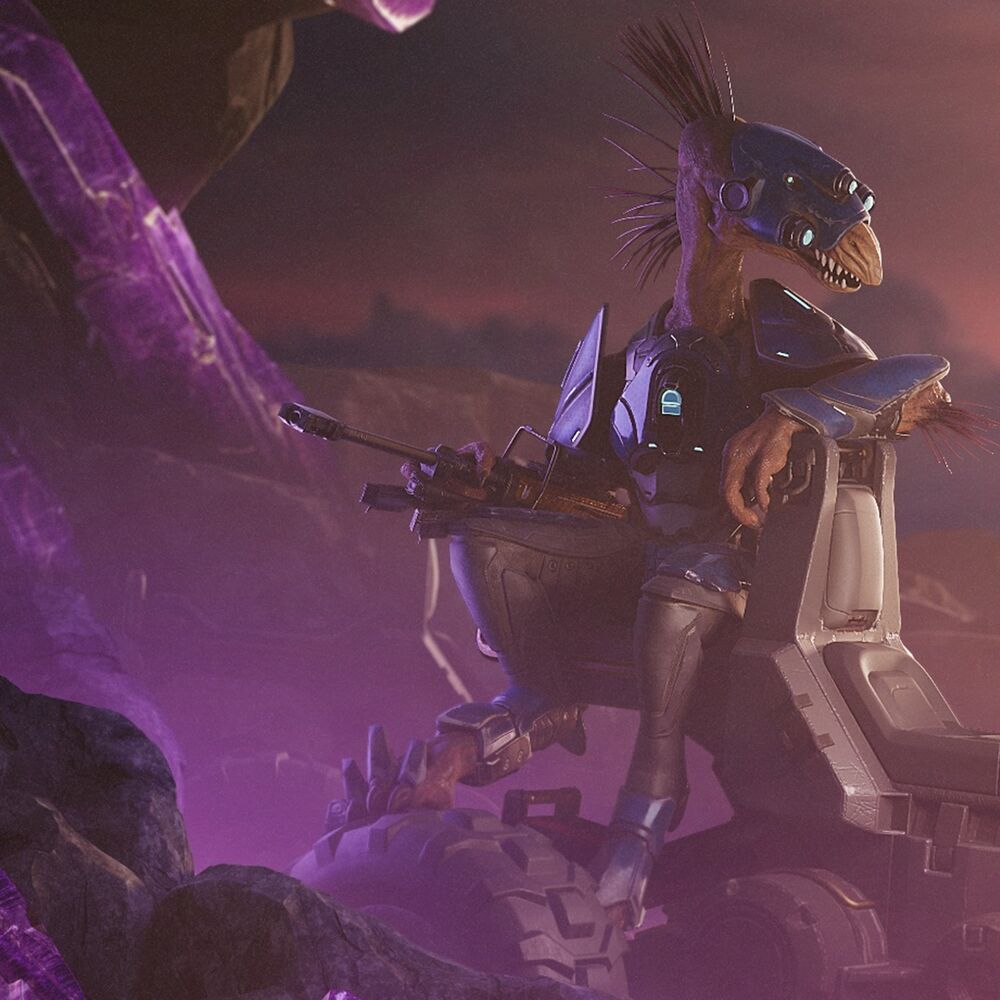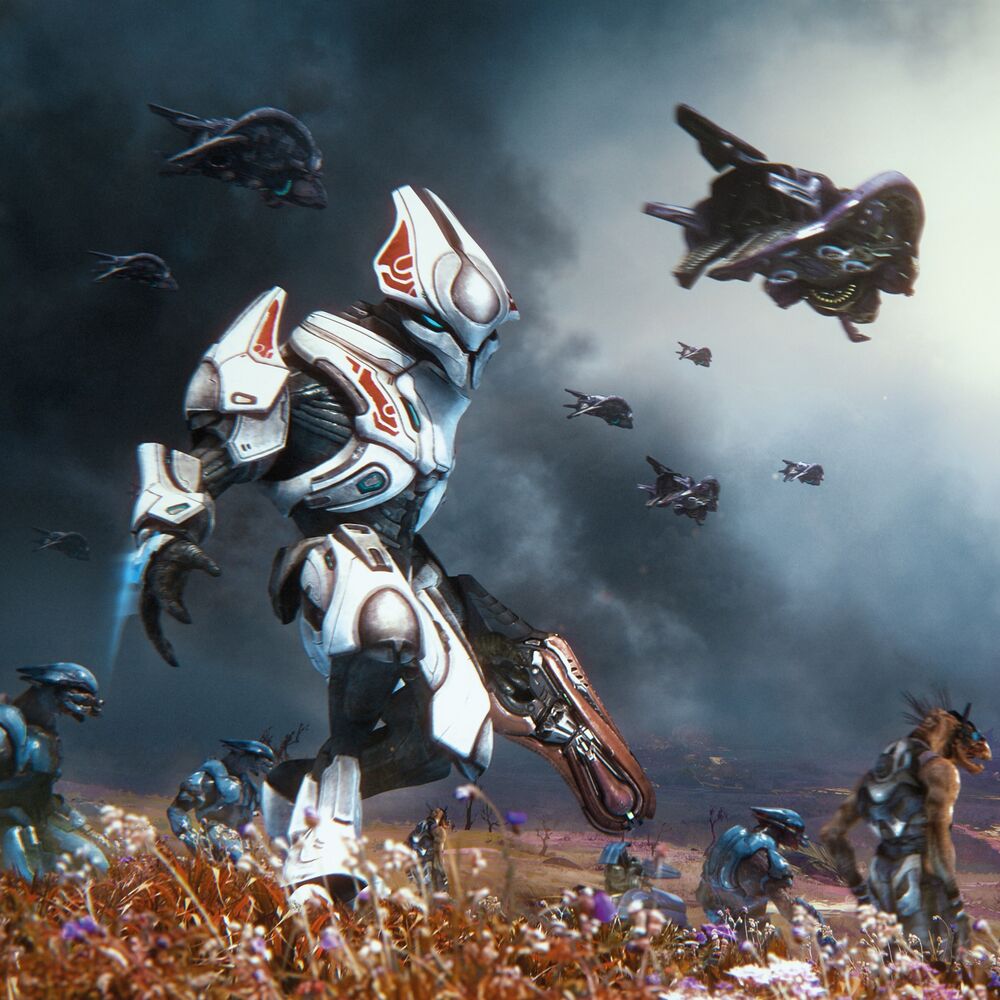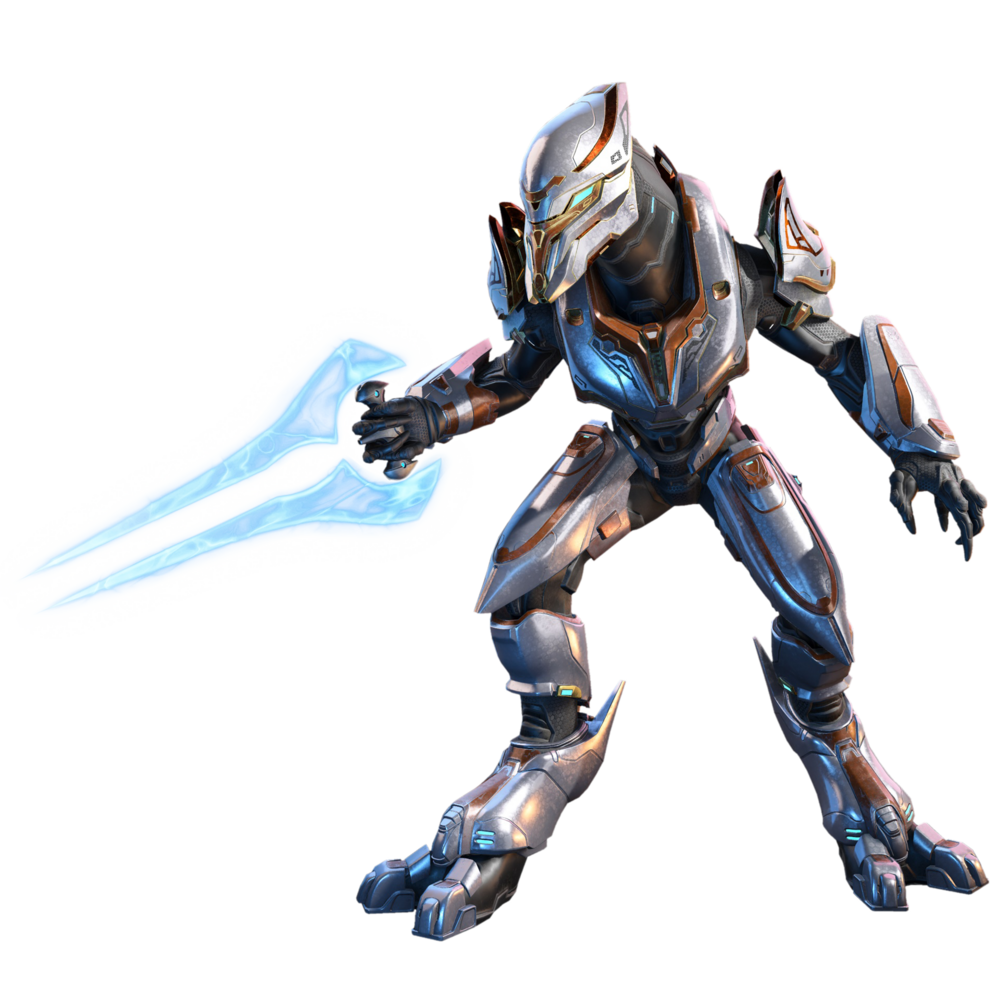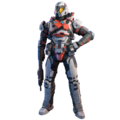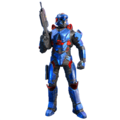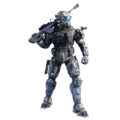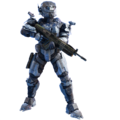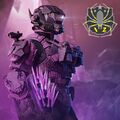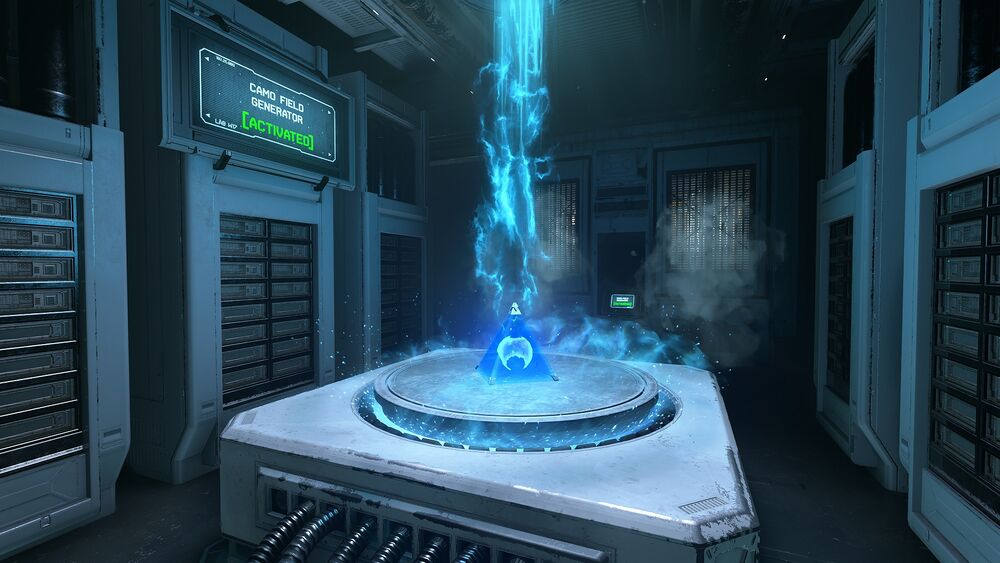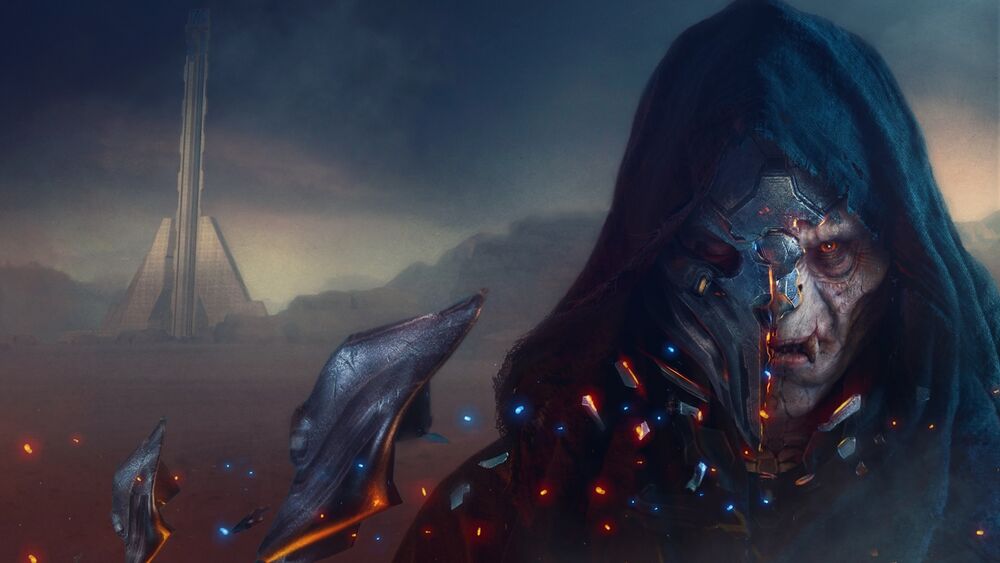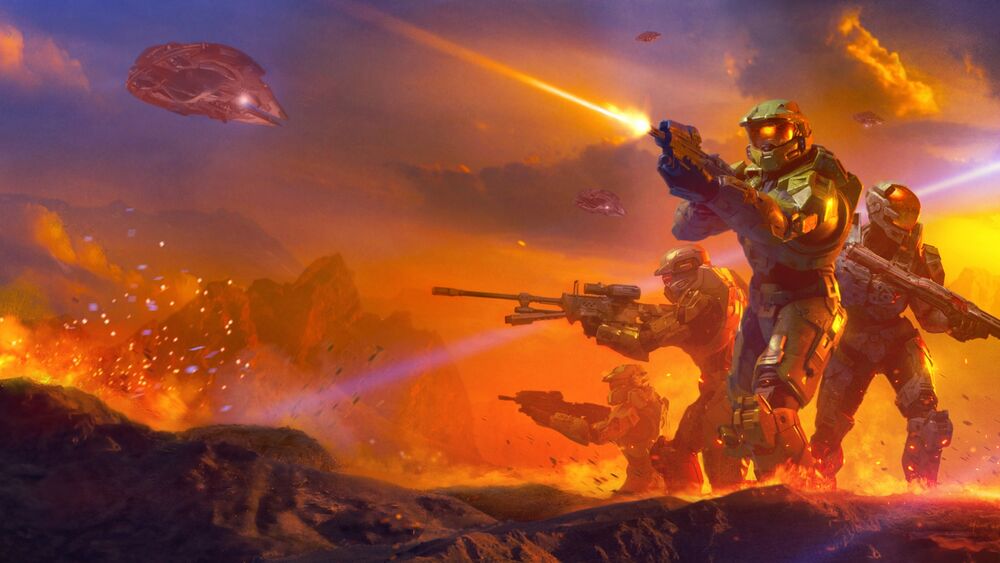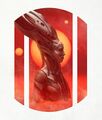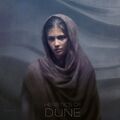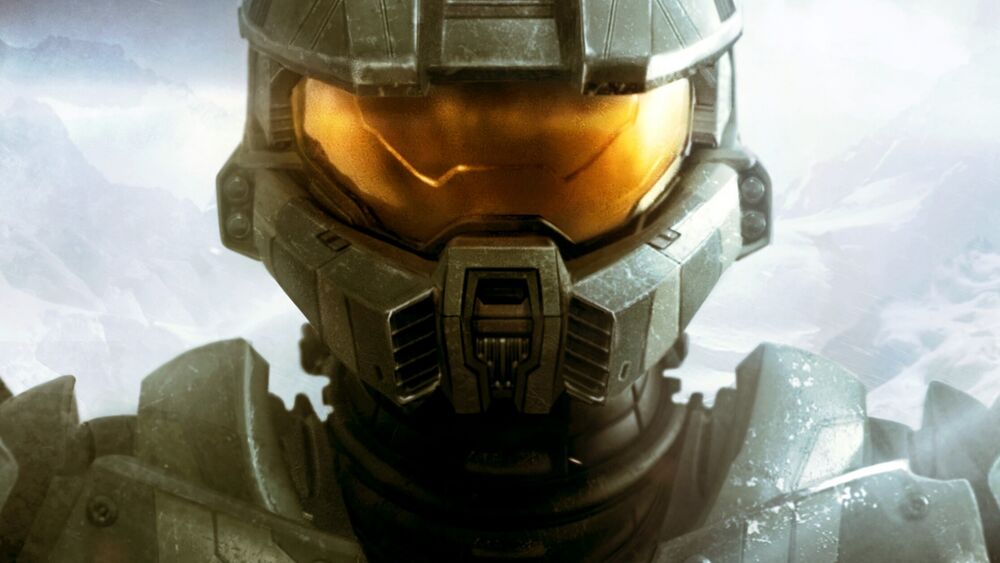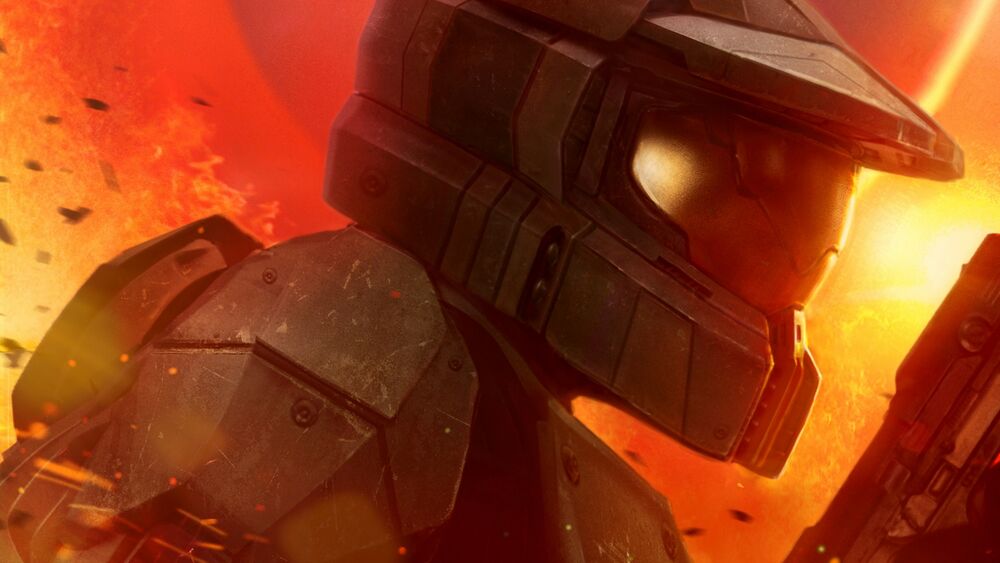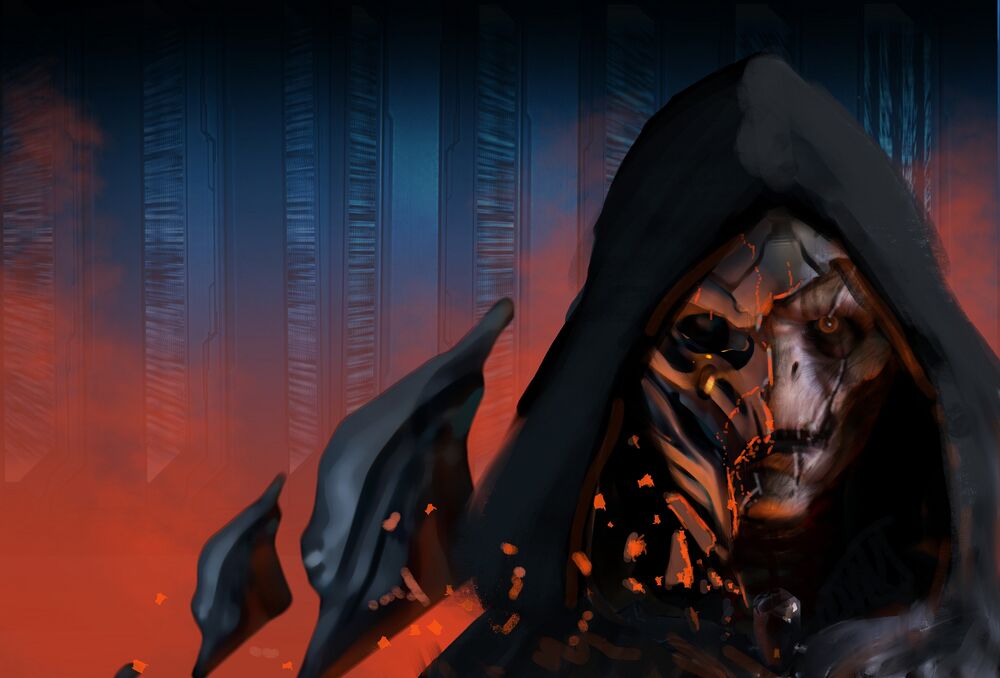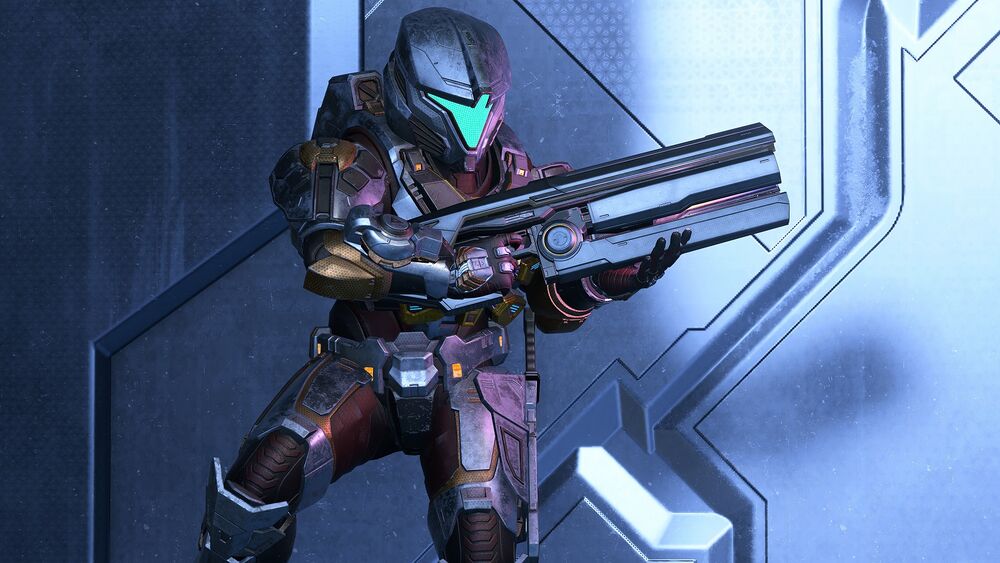Chronique:Canon Fodder - Covering Fire
Issue 149
Welcome back to Canon Fodder in The Year of Our Didact 2024!
Halo Infinite’s latest content update has just launched with some Halo Wars-themed goodness, there’s less than a month to go until the release of Halo: Epitaph, and Canon Fodder is just one issue away from a rather awesome milestone number.
But you’re not here for the preamble, you’re here for the lore (as well you should be), so let’s start off by putting some faces to the names you’ve seen over our in recent Waypoint Chronicles…
CHRONICLES CHARACTERS[modifier]
Over the last year, we’ve introduced a variety of characters throughout our Waypoint Chronicles—some brand new, some who have been around in the fiction but you hadn’t gotten to know yet.
ELENA BOBROV
SERVICE NUMBER: 91532-11116-EB
RANK: Gunnery Sergeant
BIRTH WORLD: Alluvion
Born just a handful of years before humanity’s first contact with the Covenant, Elena Bobrov was part of a generation that grew up knowing only life-or-death conflict. Enlisting into UNSC Army service on Alluvion as soon as she was of-age, her first encounter with the alien alliance came in 2542 when the Fleet of Particular Justice glassed major population centers after several weeks of combat. Following the evacuation of Alluvion, Bobrov would go on to serve in several pivotal conflicts in the Covenant War, including the siege of New Alexandria during the fall of Reach.
Following a brief retirement from the military in 2553, Bobrov would later return to service aboard the UNSC Infinity prior to its formal commissioning where she would take part in the Battle for Requiem as the driver of an M510 Mammoth during Operation: WHIRLPOOL. Promoted to Gunnery Sergeant, Bobrov would continue to serve in the subsequent Requiem Campaign and remained aboard the UNSC Infinity through Operation: WOLFE and the conflict at Zeta Halo.
ARKAD NAR ‘KULUL
RANK: Fleetmaster
BIRTH WORLD: Khael’mothka
Born on the hostile frontier colony of Khael’mothka, Arkad ‘Kulul showed great tactical acumen during his early years of Covenant service and quickly rose to the rank of shipmaster—though his lack of piety led to an incident where he caused minor offence to a steward of the High Prophet of Tolerance which saw ‘Kulul assigned to an outdated Useumru-pattern voidpiercer. After exposing and eliminating the leaders of a heretical faction targeting Yonhet couriers bound for High Charity with recovered relics, 'Kulul would reluctantly be rewarded with command of the Fleet of Recalcitrant Ire.
Stationed on the farthest edges of the empire and tasked with the protection of Covenant fringe species, Fleetmaster Arkad Nar ‘Kulul saw limited involvement in the War of Annihilation against humanity. In the wake of the Great Schism and onset of the Blooding Years, he would ally his fleet with the Arbiter’s forces, protect valuable resource worlds, and aid in transporting Ussan refugees to Sanghelios. Following the retreat of the Created, Fleetmaster ‘Kulul would remain in the Urs system to aid in combating Banished incursions.
DIBDIB
RANK: Scannermaster
BIRTH WORLD: Suban
Considered a young adult by the age standards of her species, Dibdib was born into a large family of Unggoy refugees that sought safe harbor on Suban as the Blooding Years began in earnest. Having grown fascinated with Sangheili martial culture in her youth, Dibdib volunteered to serve the Arbiter’s Swords of Sanghelios where she quickly proved adept at parsing through vast quantities of information that would traditionally require the assistance of an artificial intelligence.
Serving aboard the Hekar Taa-pattern blockade runner Scorrin’s Blade as scannermaster, Dibdib is regarded as a valued—if verbose and easily startled—member of Shipmistress Mahkee ‘Chava’s crew.
DAHKS
RANK: Khordat
BIRTH WORLD: Eayn
Even in their nest-years, Dahks became known as a keen tracker, adept at understanding and cataloguing the deepest wilds of the Kon’chomet jungles on Ruuht. The time spent navigating the region’s challenging scope of flora and fauna would ultimately pay dividends in teaching Dahks the patience and focus they would later employ on important battlefronts during the War of Annihilation.
Serving in the Covenant regime as part of the elite and clandestine sniper unit known as the Jha’kaar, Dahks gained invaluable knowledge on vital points of the empire’s interest, including key resource caches, information hubs, and cordoned treasure worlds. It was information they are keen to use in the wake of the Great Schism, but patience must be practiced when evaluating when to act on such knowledge, and who to trust with any plans to do so.
FAHL ‘NTO
RANK: Evocati Delegatus
BIRTH WORLD: Sanghelios
For two decades, Fahl ‘Nto served the Covenant military as an obedientiary within the Fleet of Chastened Impiety. Known for his penchant in motivating even the most cantankerous Kig-Yar to serve with fervent dedication, ‘Nto rode an exemplary military record into the upper echelons of the Evocati, transferring to the Fleet of Particular Justice at the direct request of then-Supreme Commander Thel ‘Vadamee.
Near the close of the War of Annihilation, Fahl led several military assaults on key human sites during the Covenant’s invasion of Reach. This campaign was punctuated by a string of victories that earned Fahl widespread renown among his peers, but is now regarded by the former Covenant Ultra himself as the source of his greatest shame. Though he does not speak directly of the experience, there are fitful nights where his sleeping sins are mumbled in broken song, each desperate to find a forgiveness Fahl could never grant himself.
ORIM ‘KASAAN
RANK: [//TRANSLATION UNCLEAR//]
BIRTH WORLD: Glyke
When Orim ‘Kasaan’s homeworld was destroyed at the hands of a Spartan fireteam in 2553, the greatest devastation he felt was not from the violent destruction of any landmass or tragic loss of life—it was the gradual unraveling of his marriage in the unsettled years that followed. In the wake of the Great Schism, Orim had pledged his sword in service to Thel ‘Vadam, eager to see through the Arbiter’s vision for wider unification and collaboration. But the destruction of Glyke quickly put that allegiance to the test. Through careful and deliberate meditation and council with the Arbiter himself as well as trusted confidants, Orim found the process of forgiveness and the quelling of vengeance to be not as insurmountable as he initially feared.
But the same could not be said for that of his life-mate, Aumra. The trauma suffered over the loss of her home planted a rapidly growing seed of hatred for humanity, a feeling that infected her relationship with Orim like a cancer when he remained steadfast in his loyalty to the Arbiter’s agenda. From her perspective, Orim’s love for their enemy was greater than his love for her, and the anguish it caused her heart fueled a fury that still burns deep, even years after their estrangement.
The rending of their relationship is still something that Orim actively strives to not let consume him, each day reminding himself that he must sacrifice his own desires to secure a better future for countless other Sangheili scattered among the stars.
FIRETEAM JOROGUMO
Another tangible element of the current treaty between the Swords of Sanghelios and the UNSC, Fireteam Jorogumo is a detachment of Spartan operatives placed under the command structure and authority of local allied kaidons to bolster cultural security efforts on Sanghelios.
The team’s structure is unique compared to standard Spartan fireteams, with the full roster being technically divided into two separate squads, Jorogumo One and Jorogumo Two, with each typically being assigned to distinct locations and equipped to focus on separate objectives aligned ultimately with the Arbiter’s interests for the region. To optimize integration and foster methodological inclusion amongst cross-species cohorts, each Spartan is given a unique Sangheili-derived name, the origins of which are closely guarded and typically only told to the individual operative themselves.
MAPTACULORE: ILLUSION[modifier]
Last week, we showed off the new multiplayer map that has just arrived in Halo Infinite’s latest content update: Illusion.
In case you missed it, be sure to give our Q&A with former multiplayer designer Cliff Schuldt a read to learn more about the design of this awesome new map—from its conceptual backstory as an homage to the map design of Halo: Combat Evolved, to some of the hints towards a few of the Easter eggs that lie in wait.
Beneath the Office of Naval Intelligence’s cliffhanging Ilex Facility—where attempts to reverse engineer Forerunner remediation techniques seek to carve a path for the future—lies a buried black site from the more recent past.
Following the successful breakthrough of harnessing energy shielding for Mjolnir Powered Assault Armor, further experiments were conducted with Covenant technology recovered in the field. These overshield and active camouflage modules raised many questions about the curious nature of their placement within transparent cuboid and pyramidal containers. Though few contextual answers have been confirmed, successful development of quick-application core modules were instrumental in putting UNSC forces on a more level playing field against technologically superior foes.
EPITAPH WITH MCGRATH[modifier]
Halo: Epitaph, the next novel by Kelly Gay, arrives on February 27—just a month away! We’ve got some previews coming throughout February to further whet your appetite, but we thought we'd kick things off with a fireside chat with the incredibly talented artist who gave us the book's stunning cover art, Chris McGrath.
You can find more of Chris McGrath's incredible artwork on his personal website and on his ArtStation page.
Welcome, Chris! Thank you very much for giving us some of your time to talk about your work on Halo: Epitaph. But before we get into that, introduce yourself—tell us a bit about who you are and what you do.
Hello, everyone! I’ve been a Sci-Fi and Fantasy book cover illustrator for about twenty-four years now. I grew up in NYC and went to art school here as well, at the School of Visual Arts, where I learned to paint and draw more seriously.
I graduated in 1995 but did not have enough pieces in my portfolio, so as I continued to work on that, I gave guitar lessons and did some medical illustration in the meantime to make money. Finally, in the summer of 2000, I started some professional work for some toy companies, and in 2001 I did my first cover for Penguin Books. After that, it took about three years to build up enough work to call it full time, and finally I was able to support myself doing illustration. I’m super lucky to still be working after all this time.
How did you discover your passion for art and how did that evolve into a particular affinity for book covers?
Like most artists, I started drawing at a super young age. When I was in my grammar school years, I drew a lot of comic book-type stuff as well as Dungeons & Dragons art, etc… But when I was around eleven years old, my uncle had this Frank Frazetta book that he had showed me. Right at that moment, I knew that’s what I wanted to do, no question. So I got serious about drawing more, but did not know how to paint and when I tried on my own, it was a mess. It wasn’t until college that I got some proper training in painting. But Frazetta’s art was the main catalyst in me deciding to become a book cover artist. There were many other influences since, but no doubt that it was his work that made me think about becoming a book cover artist.
What are some artistic elements that make a great piece of cover art in your professional opinion?
That can be a bit different depending on the type of cover. But one thing that is very important is the graphic impact of the big shapes and design in the way it arranges the composition of the image. Covers need to catch your eye right away from a distance or a quick glance, so those big shapes need to say something immediately to draw you in.
If it’s a character-driven cover, the emotional connection is important—more so than anything narrative, at least that’s how it is for me. If the cover is a landscape, then the elements of the landscape need to be the character and make a statement. For example, something like Castlevania or the Tyrell Corporation in Blade Runner—those buildings make a statement and drive an emotional response even if it’s different than looking at a character.
Your art has been particularly well known for the urban fantasy subgenre, but you’ve also done covers for the likes of Star Wars and Dune. Are there certain ways that a genre influences your style and approach to a particular piece?
Funny enough, I didn’t even know much about the Urban Fantasy genre when I first started out. My portfolio was totally sci-fi and fantasy, as well as my early commissions. I had a darker style back then and the art director at Penguin thought that it would work well for The Dresden Files… turns out I guess he was right, because after that I’ve been booked and working steady ever since.
But to answer your question, I would say my influences come from other sources. I had a lot of academic and traditional training in painting and drawing, so the old masters were a big source of inspiration for me no matter what genre I was working in. Also, a lot of the more edgy fashion photography that was going on at the time played a role in influencing my work.
Speaking of old masters, who are some of your biggest artistic inspirations? The Rembrandt vibes are strong in some of your pieces!
Well, you nailed it there. Rembrandt is one of my biggest influences to this day. Of course, there were my earlier artists that inspired me like Frazetta, Michael Whalen, Keith Parkinson (etc), but as I learned more about painting and art history, old masters like Rembrandt, Van Dyck, and Sargent really began to shape my style.
Also, some modern artists who work in a traditional style like Odd Nerdrum and my painting teacher Steven Assael were inspirational. But my teacher Steve was pivotal in me becoming a professional artist. I often think and feel that if I hadn’t studied with him for four years, I’d likely be doing something else. I learned almost everything about painting and drawing from him. He’s one of the best realist painters around, and I was incredibly lucky, just by chance, to have studied with him.
Tell us a bit about your journey with Halo over the years.
Like a lot of people, when I first played Halo on the original Xbox, my jaw was on the ground. I was so blown away when that first Covenant dropship flew in overhead, it was like living in a sci-fi dream.
I’ve played all of the games to date, so when the opportunity came around to work on a book cover for the series, I was pretty excited.
Though I will say, the cover art for Halo: Silent Storm was pretty challenging because of the new armor. I had some comic art that was being developed that Microsoft had sent me along with some notes, but there had not been any realistic representation done of the suit yet—that task had fallen to me, and I wasn’t sure how closely I had to follow the rough designs. Also, there’s a lot of pressure because changing the look of the Master Chief’s armor is a very sensitive subject.
But overall, I feel I did my best and I’m pretty happy with the covers. Especially Shadows of Reach, which definitely has my favorite Master Chief armor design—and I got to have Blue Team with him.
My latest work on Halo: Epitaph was super fun because I got to do the Didact, which was a really nice change of pace. I really liked that I got to do something darker, showing the character’s torment.
You’ve done a few Halo book covers now, starting with the Master Chief’s youth in Silent Storm and Oblivion, then his return to Reach with Blue Team in Shadows of Reach, and now the Didact’s soul-searching journey in Epitaph. These have very character-centric covers, but what I find is quite different about these compared to your other work is that the faces are always largely concealed. How does that factor into the kind of mood and atmosphere you’re looking to evoke with cover art?
Good question. The concept artists have done such a good job with armor designs and they’re so iconic looking, it sort of makes designing the cover easier. And it’s one less thing to worry about, so I can focus on the composition. But each character design has its own vibe and personality that is very strong, so showing a face or expression is not needed. They already speak to the viewer enough.
At that point for me, it’s all about having cool poses and interesting lighting that will help set the mood when designing a Halo cover. One of the reasons I really liked working on Shadows of Reach is because I pretty much had free reign, it just needed to echo The Fall of Reach, but everything else was left to me on how I wanted to compose things, whereas the two previous covers were to be close-up portraits from the start.
What does your process for creating cover art look like?
Halo was a bit different because it’s an established franchise, but for my usual commissions it starts with a sketch based on some loose notes or ideas from the publisher’s art director and editor. I pretty much have a lot of freedom for composing the cover, but the only thing where the publisher gets particular is portraying the character. They may say the character’s build is this, wears this and that, has dark hair, etc… The cool thing is I still have a lot of freedom in designing that character because the books often leave a lot open for interpretation within the basic descriptions.
The next stage is gathering my reference, which is very important, especially when you work in a very realistic style. Everything—including the lighting—needs to be convincing and accurate. I’ll do a photoshoot with live models for my figures, gather some photo references, and these days, more and more, I’m creating my backgrounds and other elements with Zbrush and other 3D software to help with things like lighting.
Once I have all of that, I start the painting in Photoshop. Once it’s done, I send it off to my art director for approval. Occasionally there are some minor changes to be made, but quite often things go pretty smoothly.
We explored a few different ideas for the Epitaph cover, including one (pictured above) of the Didact inside the tower itself—some elements changed, but some have remained the same. What were some of the things you felt were important to capture for this cover art?
Right away, the main thing I felt was most important was to capture the Didact’s torment and thirst for vengeance. I really wanted that to come across in his stare at the viewer, along with him looking like he’s been on and going through a really difficult journey. His face and expression are the star of the show, so for me the main focus is there, but the background is important in supporting this focus by adding mood and a sense of the world. I really like where we ended up with the dark, desolate desert setting. It evokes the sense of what kind of journey the Didact is on.
It was definitely fun working on something darker in the Halo universe.
Do you have any words of wisdom to share with any artists who may be reading this?
Yes. Invest in yourself and don’t cut any corners. If you do, you will pay the price. It’s definitely not easy and the journey is different for everyone, but I can say, very heavy, long hours of practice and study in your craft will get you there at some point, if you stick with it and really love and want to be an artist.
There is probably more competition than ever, and I know that can be discouraging for young people trying to get into the industry, but just paint or draw or model the things and subject matter that’s interesting and important to you. Eventually from that your own style will show up on its own, and you’ll be able to bring something new to the table for people.
Thank you very much again for sharing your thoughts and experience with us, Chris! Do you have any closing words before we let you go?
Thank you! This was a lot of fun. I hope I didn’t ramble too much, but I could have kept going for a while longer on some of the questions. Thanks again for the interview!
FORGED IN FIRE[modifier]
Over the holidays, some eagle-eyed folks noticed that some of Kelly Gay’s novels (Smoke and Shadow, Renegades, and Point of Light) received some rather fascinating new cover art treatments for their Chinese releases.
These delightful new interpretations of the journey undertaken by Rion Forge and Spark are the work of 陈彦霏 Chen Yanfei.
Obviously, some of the details of these covers bear some canonical divergences. Rion Forge is not a Spartan and Gek ‘Lhar looks a lot more handsome than I recall from Spartan Ops, but the essence of these covers rather wonderfully captures the spirit of these adventures—much like the Polish cover of Halo: The Fall of Reach that released in 2012. In case you've not seen that, you should definitely go and look that up.
We really enjoyed seeing these alternate takes on the cover art for Kelly’s books, and now so can you!
INTEL COMPLETE[modifier]
Our final piece of Halo Infinite seasonal Intel was released recently, teeing us up for a certain free coating that many have been anticipating the release of to coincide with a certain book release.
The complete collection of Halo Infinite Intel can be found here on Halo Waypoint:
COMMUNITY LORE CORNER[modifier]
Kicking us off for the Community Lore Corner this month is MetaNerdz Lore, who has done a half-hour breakdown of information around the Precursors. It’s always fun to see people dive into the deepest and weirdest areas of the Halo universe, so be sure to give this a watch!
Following on from Elena Bobrov’s return in the Trial of Reckoning Waypoint Chronicle and the details we gave about her rather strange origins in Halo 4, Generalkidd has put together a short video looking into the audio logs in the mission Reclaimer.
Who are some of the oldest beings in Halo? Installation00 has a great video investigating this question.
Finally, we conclude this section with GammaCompanyMark’s breakdown of the Lursu-pattern Brigantine—a Sangheili vessel featured in Halo 5.
That brings us to the end of 2024’s debut issue of Canon Fodder. As noted at the start of this issue, we’ve got a pretty notable milestone issue coming next month… maybe we should do some cool things for that?



